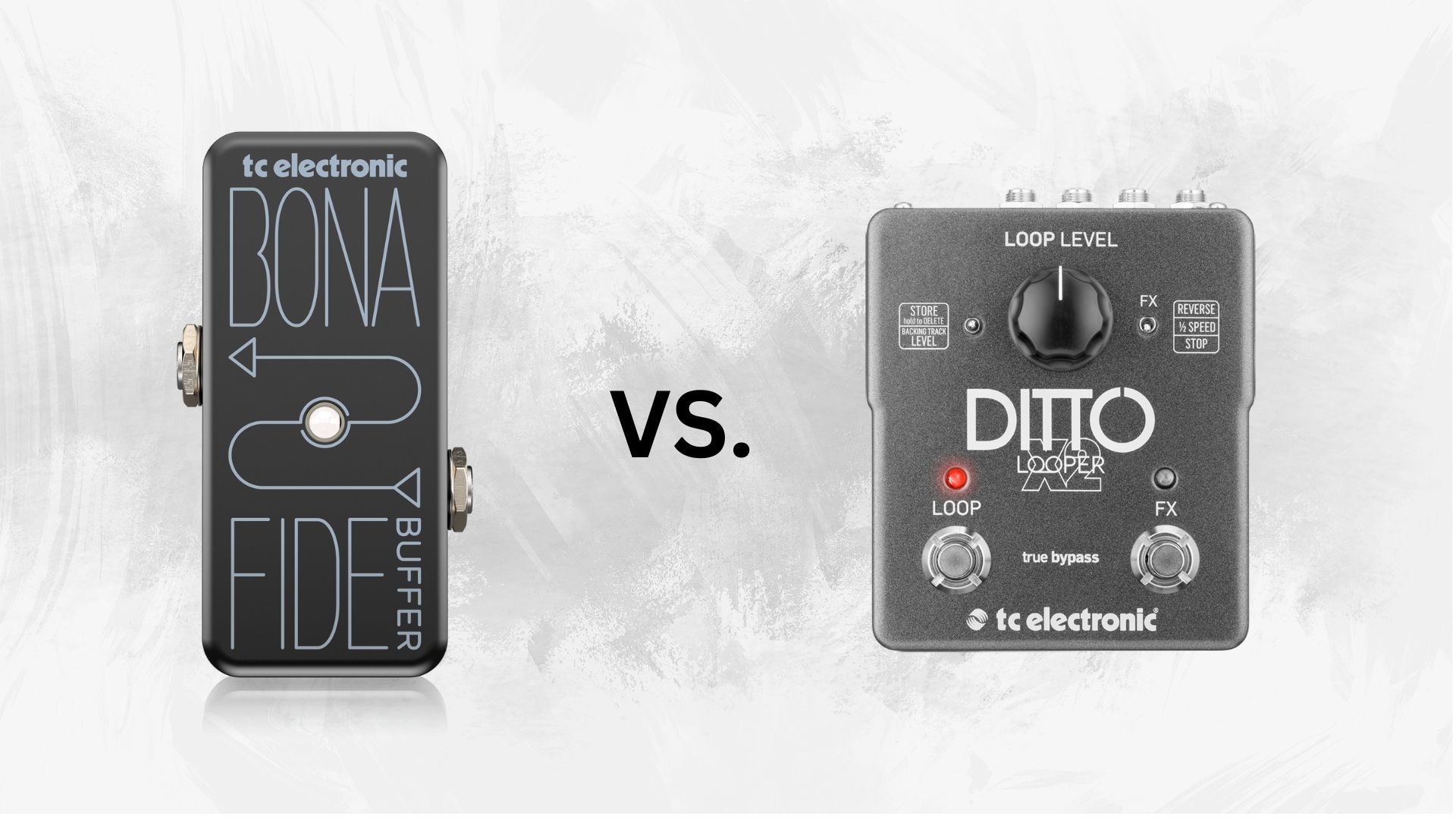
 Anthony Easton
Anthony Easton
(Photo by YEH CHE WEI on Unsplash)
The title of the most expensive guitar pedal ever sold likely goes to one used by Kurt Cobain. A studio-used pedal from the iconic "Peel Sessions" fetched an astounding $75,000 at auction. However, another contender for the crown of the most expensive pedal is the Klon Centaur. Josh Scott of JHS Pedals famously listed the first Klon Centaur ever made for $500,000. While it's unclear if it sold for that amount, the asking price alone sets it apart.
The guitar pedal market is as diverse as it is complex, with certain pedals achieving legendary status and commanding eye-watering prices. But what exactly contributes to a pedal's value? Here's a closer examination:
Rarity is a primary driver of value in the world of guitar pedals. Limited edition models, pedals that were produced in small quantities, or those discontinued by manufacturers become highly sought after. Collectors and enthusiasts often seek these rare finds for their uniqueness and the distinctiveness they bring to a guitar setup. A pedal's rarity can be due to various reasons, including limited production runs, use of now-unavailable components, or pedals that were custom-made for specific artists.
Within the world of collectible guitar pedals, not all versions are created equal. Early iterations or specific batches of a pedal can become particularly coveted due to unique characteristics or quirks in their sound. For instance, minor changes in circuit design, components used, or even the pedal's exterior artwork can significantly affect a pedal's desirability and, consequently, its value. Collectors often pay premium prices for "first edition" pedals or those with specific features that were altered in later versions.
The impact of a pedal on music history cannot be overstated when it comes to its value. Pedals that introduced groundbreaking technology or contributed to a significant shift in music production and guitar tone are highly prized. For example, the first mass-produced fuzz pedal played a pivotal role in the development of rock music, granting it historical importance. Pedals that embody technological innovations or that were pivotal in the creation of new genres or sounds are often considered milestones in music history, making them valuable pieces of musical heritage.
Provenance—or the pedal's history of ownership and use—adds a layer of value that transcends its physical and sonic qualities. A pedal once owned or used by a renowned musician can see its value skyrocket, particularly if it was used in a significant recording or a historic performance. The association with a famous artist not only provides a tangible connection to music history but also imbues the pedal with a sense of legacy and charisma. Pedals documented to have been part of iconic songs or albums carry with them stories and emotions that resonate with fans and collectors alike, making their provenance a key factor in their valuation.
Beyond these core factors, several other considerations can influence a pedal's value. These include the pedal's condition, originality (whether it has been modified or remains in its original state), and even the cultural or music scene it is associated with. The market for guitar pedals is dynamic, with trends and collector interests evolving over time. Understanding these nuances can provide deeper insights into why certain pedals stand out in the crowded marketplace of musical equipment.

The Klon Centaur, a name that resonates with reverence in the guitar community, arguably stands as the true "most expensive" pedal of all time, not just in terms of monetary value, but in its legendary status and impact on guitar tone.
On the second-hand market, a standard Klon Centaur can command prices upwards of $4,000-$10,000, a testament to its coveted status. This price range is remarkable, considering that when new, these pedals were sold for a fraction of that price. The surge in value reflects not only its rarity but also the high esteem in which it's held by guitarists.
Introduced in the mid-1990s by Bill Finnegan, the Klon Centaur was designed to offer guitarists a means of achieving a rich, harmonic overdrive without sacrificing the original tone of their instrument. Unlike many overdrive pedals that color the guitar's sound with their own character, the Centaur was celebrated for its transparent amplification of the guitar's natural sound. Finnegan's dedication to quality and his refusal to compromise on components led to the pedal's limited production, adding to its mystique.
The Centaur's sound quality is often described as magical. It enhances the guitar's natural voice, adding warmth, sustain, and clarity without overwhelming the original signal. This transparency and the pedal's ability to blend harmoniously with a wide range of guitar and amp combinations have made it a favorite among players of all genres. Its unique circuitry, which includes a charge pump to double the voltage internally, contributes to its dynamic response and the almost three-dimensional quality of its sound.
The scarcity of the Klon Centaur, coupled with the mystique surrounding its creator, Bill Finnegan, has significantly contributed to its high valuation. Finnegan was known for his hands-on approach, assembling each pedal himself and insisting on the use of specific, high-quality components, many of which became harder to source over time. This dedication to craftsmanship, combined with the pedal's discontinuation in the early 2000s, has led to its legendary status and the high prices it commands.
Despite—or perhaps because of—its high market value, the Klon Centaur is the subject of much debate among musicians. Some argue that its price is justified by its unparalleled sound quality and the craftsmanship that went into its creation. Others contend that while the Centaur is undoubtedly a high-quality pedal, the aura of exclusivity and hype has inflated its value beyond its sonic benefits. This debate is reflective of the broader conversation about value, rarity, and quality in the musical equipment market.
The Klon Centaur's legacy extends far beyond its price tag. It has inspired a multitude of clones and pedals influenced by its circuit design, a testament to its enduring impact on the music industry. The Centaur's influence can be heard in the music of countless guitarists who seek that elusive blend of transparency and warmth, making it a cornerstone of modern guitar sound.
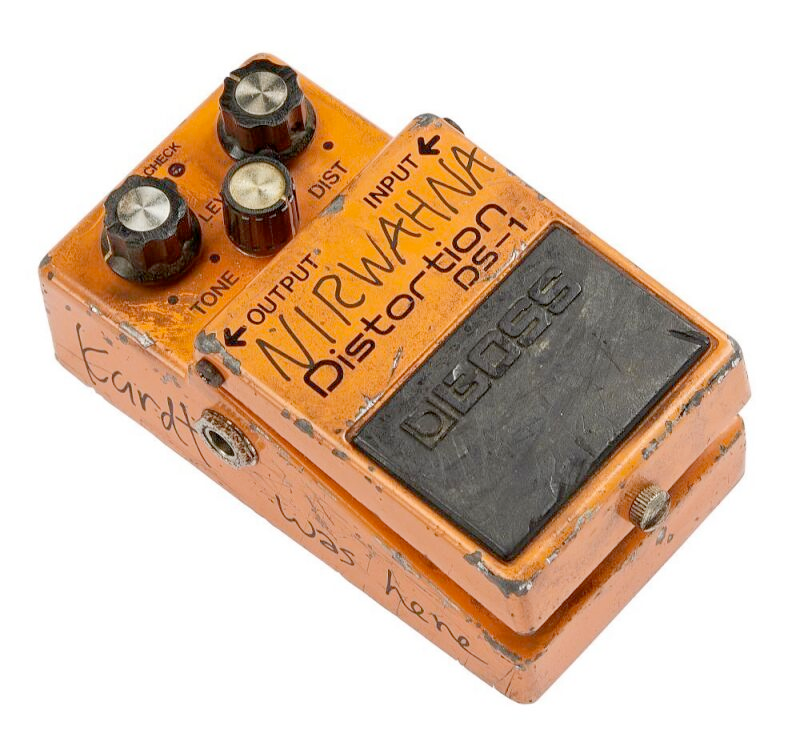
(Photo courtesy of Julien's Auctions)
Kurt Cobain, the frontman of Nirvana, remains one of the most influential figures in the world of rock music. His approach to guitar playing, characterized by a blend of raw energy and emotional depth, helped define the sound of an era. Among the tools that Cobain used to craft his iconic sound was a seemingly ordinary Boss DS-1 Distortion pedal. However, its association with Cobain and its use during pivotal moments in Nirvana's history have elevated it far beyond its original status as a mass-produced effects pedal.
The DS-1 in question gained legendary status partly due to its use during the "Peel Sessions," a series of influential radio sessions recorded by Nirvana for BBC Radio 1's John Peel show in 1990. These sessions are revered among fans for their raw energy and the unique renditions of Nirvana's songs they captured. The DS-1 pedal was a key component of Cobain's setup, contributing to the gritty, visceral sound that defined many of Nirvana's recordings.
This particular DS-1 pedal, imbued with the legacy of Kurt Cobain's musicianship and his tragic and premature death, fetched an astonishing $75,000 at auction. The sale price reflects not just the pedal's direct connection to Cobain but also the profound impact Nirvana had on music and culture. Collectors and fans alike see immense value in owning a piece of that legacy, a tangible connection to a pivotal moment in rock history.
The value of Kurt Cobain's DS-1 pedal goes beyond its function as a musical tool. It represents a link to a musician whose work continues to inspire and influence generations. Cobain's approach to music, characterized by a blend of accessibility and depth, along with his candidness about his struggles, has cemented his status as an icon. The DS-1 pedal, therefore, is not just a piece of music equipment but a symbol of Cobain's enduring legacy.
Kurt Cobain's use of the DS-1 pedal is a reminder of how the right combination of artist and equipment can create something truly transcendent. The pedal itself is a standard, affordable effect that is accessible to many guitarists. However, in Cobain's hands, it became a tool for expressing the raw emotion and groundbreaking sound that Nirvana is known for. This story underscores the idea that the value of musical equipment is not just in its rarity or its technical specifications but in the music it helps create and the emotions it evokes.
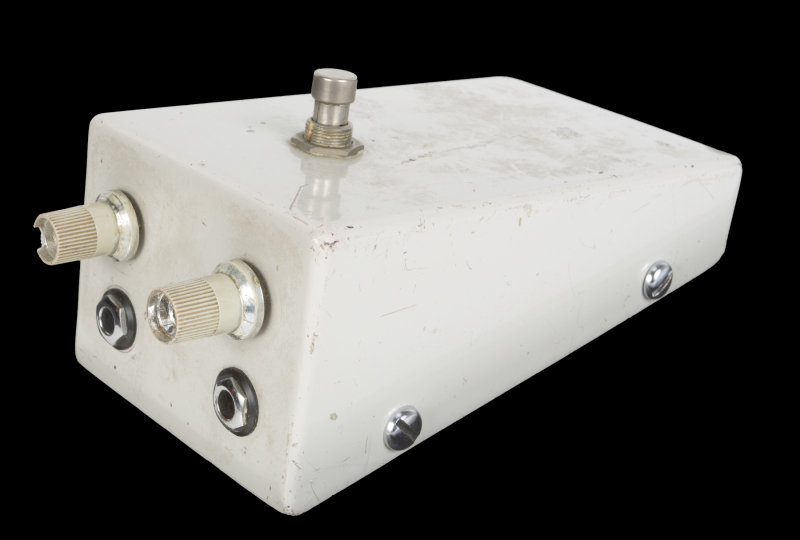
(Photo courtesy of Julien's Auctions)
The Jimi Hendrix Octavia Pedal, particularly the one used during the recordings of the live album "Band of Gypsys," represents a pivotal moment in the history of electric guitar sound. This pedal, beyond its association with one of the most innovative guitarists of the 20th century, encapsulates Jimi Hendrix's revolutionary approach to music and his everlasting impact on guitar tone and effects.
The Octavia pedal is renowned for its ability to generate an octave-up effect, adding a higher octave note to the original note played. This results in a distinctive, almost celestial sound that became a hallmark of Hendrix's guitar work. Its use on the "Band of Gypsys" album, particularly in tracks like "Who Knows" and "Machine Gun," showcases Hendrix's mastery of the pedal and his innovative approach to utilizing guitar effects to create sounds that were unprecedented at the time.
Hendrix was not just a guitarist; he was a sonic architect. The Octavia pedal was a critical tool in his arsenal, allowing him to push the boundaries of what was possible with an electric guitar. The pedal's unique sound contributed significantly to the psychedelic and experimental rock movements of the late 1960s and early 1970s. It exemplified Hendrix's ability to manipulate electronic effects to create a rich tapestry of sound that was both complex and emotionally expressive.
The specific Octavia pedal used by Jimi Hendrix on the "Band of Gypsys" live album sold for $70,400. This sale price reflects not just the pedal's association with Hendrix but also its direct connection to a landmark recording. The "Band of Gypsys" performances are celebrated for their innovation and raw energy, and owning a piece of that history carries immense value. The auction price is a testament to Hendrix's enduring legacy and the significant role his music plays in the cultural and historical landscape of rock music.
The Octavia pedal's association with Jimi Hendrix elevates it beyond a mere musical instrument to a symbol of musical innovation and genius. Its high auction price underscores the value of music memorabilia connected to iconic figures and moments in music history. The pedal is not only valuable to collectors for its rarity and historical significance but also to musicians and fans as a source of inspiration. It serves as a tangible link to a moment when the boundaries of music were expanded, and new sonic territories were explored.
(Photo courtesy of Julien's Auctions)
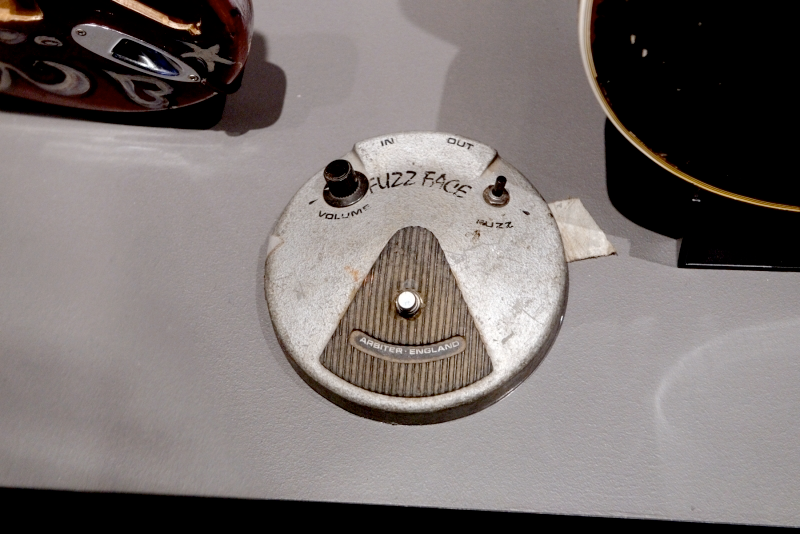
The Jimi Hendrix Fuzz Face pedal is an iconic piece of musical equipment that played a significant role in shaping the sound of the late 1960s psychedelic rock. This particular pedal, which fetched a remarkable $40,625 at auction, was instrumental in creating the distinctive, saturated tones that are synonymous with Hendrix's guitar work.
The Fuzz Face pedal is known for its rich, warm, and dynamic distortion, which allows for a wide range of expressive sounds, from subtle breakups to aggressive, fuzzy tones. Hendrix's mastery and innovative use of the Fuzz Face contributed significantly to his legendary status as a guitar virtuoso. It enabled him to explore new sonic landscapes, pushing the boundaries of electric guitar music and influencing countless musicians across various genres.
For Hendrix, the Fuzz Face was not just an effect but an extension of his musical expression. It played a crucial role in his groundbreaking performances at Woodstock and the Monterey Pop Festival, as well as on studio recordings like "Electric Ladyland." The pedal's ability to produce a thick, harmonically rich tone complemented Hendrix's playing style, allowing him to achieve a sound that was both powerful and emotionally resonant.
The sale of the Jimi Hendrix Fuzz Face pedal for $40,625 highlights the immense value placed on memorabilia associated with legendary musicians. The auction price reflects not only the pedal's connection to Hendrix but also its importance in the history of rock music. Collectors and fans alike view such items as crucial pieces of musical history, embodying the spirit and innovation of an era defined by its groundbreaking sounds.
The Fuzz Face pedal's association with Jimi Hendrix has made it an emblem of musical innovation. Its significant auction price is a testament to Hendrix's enduring influence on music and culture. The pedal serves as a reminder of a time when the electric guitar was redefined as a tool for musical exploration, pushing the boundaries of what was possible in popular music. It continues to inspire guitarists worldwide, symbolizing the power of creativity and the lasting impact of Hendrix's musical genius.

(Photo courtesy of Julien's Auctions)
Kurt Cobain's 1993 stage-played DOD Grunge pedal, which sold for $16,000, holds a special place in the annals of rock music, representing the gritty, raw sound of Nirvana that defined the early 1990s grunge movement. This pedal, used during live performances, is a tangible link to Cobain's profound influence on music and his unique approach to guitar playing.
Cobain was known for his straightforward yet innovative guitar work, and his use of effects pedals played a significant role in crafting Nirvana's signature sound. The pedal sold at auction was part of Cobain's rig during a pivotal time in Nirvana's career, contributing to the band's live performances and their impact on the music scene. Cobain's ability to convey intense emotion through his playing, aided by his choice of effects, left an indelible mark on the rock genre.
Cobain's use of pedals was instrumental in achieving the dynamic contrast that characterizes much of Nirvana's music, from the whisper-quiet verses to the explosive, distorted choruses. This particular pedal helped shape the soundscapes of iconic tracks, allowing Cobain to express a range of emotions through his guitar. The pedal's contribution to Nirvana's live performances underscored Cobain's creativity and his knack for harnessing technology to enhance his musical vision.
The $16,000 auction price for Kurt Cobain's 1993 stage-played pedal underscores the continuing fascination with Cobain's artistic legacy and the enduring appeal of Nirvana's music. It reflects the value placed on objects that have a direct connection to influential musicians and the moments they created. For fans and collectors, owning a piece of Cobain's equipment is a way to connect with the musician's life and work, celebrating his contribution to the music world.
This pedal, beyond its function as a piece of musical equipment, represents a piece of rock history. It signifies the era of grunge music and Cobain's role as a pivotal figure in that movement. The auction price highlights the cultural and historical value of memorabilia associated with artists who have had a profound impact on music and society. Cobain's pedals, guitars, and other personal items continue to attract attention, not just for their connection to the musician, but for their role in a transformative period in music history.
Q: Why are some guitar pedals so expensive?A: Several factors contribute to the high cost of certain pedals, including rarity, quality, historical significance, and the fame of previous owners. Limited editions and pedals used by renowned musicians often fetch the highest prices.
Q: Is investing in high-end guitar pedals worth it?A: For musicians seeking specific tones or collectors passionate about music history, investing in high-end pedals can be worthwhile. The value of a pedal is subjective, depending on its importance to the individual's sound or collection.
Q: Can a pedal really change the sound of a guitar that much?A: Absolutely. Pedals can dramatically alter a guitar's tone, adding effects such as distortion, delay, reverb, and more. They are essential tools for crafting a musician's signature sound.
Q: How do I know if a pedal is a good investment?A: Researching the pedal's history, rarity, and market demand can provide insight into its potential value. However, the best investment is often in pedals that you will use and enjoy, regardless of their future financial worth.
Q: Are newer pedals as good as vintage ones?A: Many modern pedals are designed to emulate or even improve upon the sounds of vintage models, incorporating advanced technology and features. The choice between vintage and new depends on personal preference and the specific sound a musician is seeking to achieve.
Check out the latest news and articles from around the pedal world.

 Anthony Easton
Anthony Easton
 Anthony Easton
Anthony Easton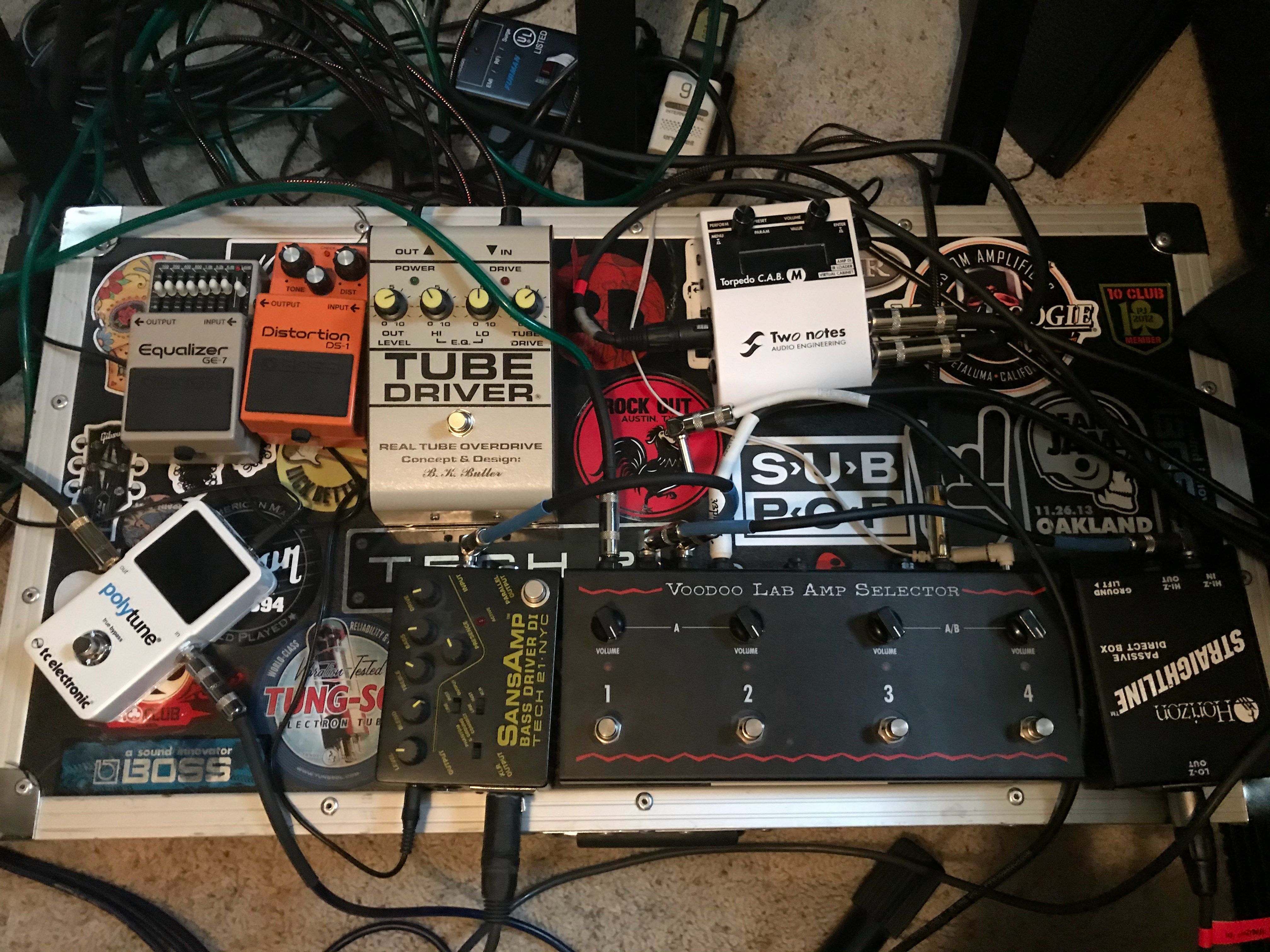
 Anthony Easton
Anthony Easton
 Anthony Easton
Anthony Easton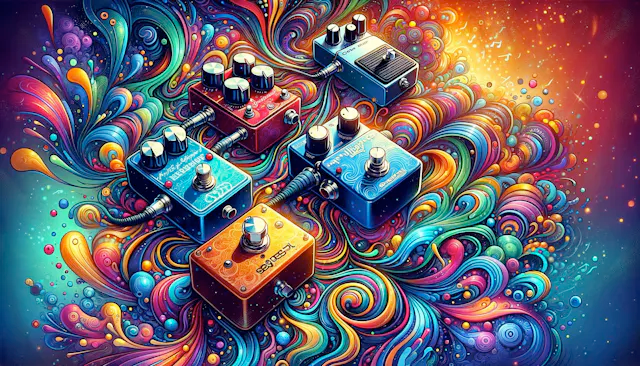
 Anthony Easton
Anthony Easton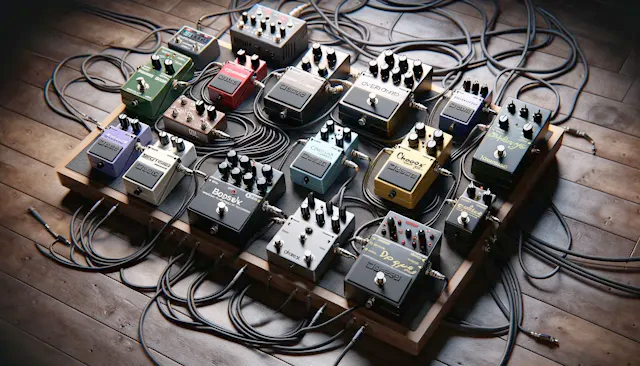
 Anthony Easton
Anthony Easton
 Anthony Easton
Anthony Easton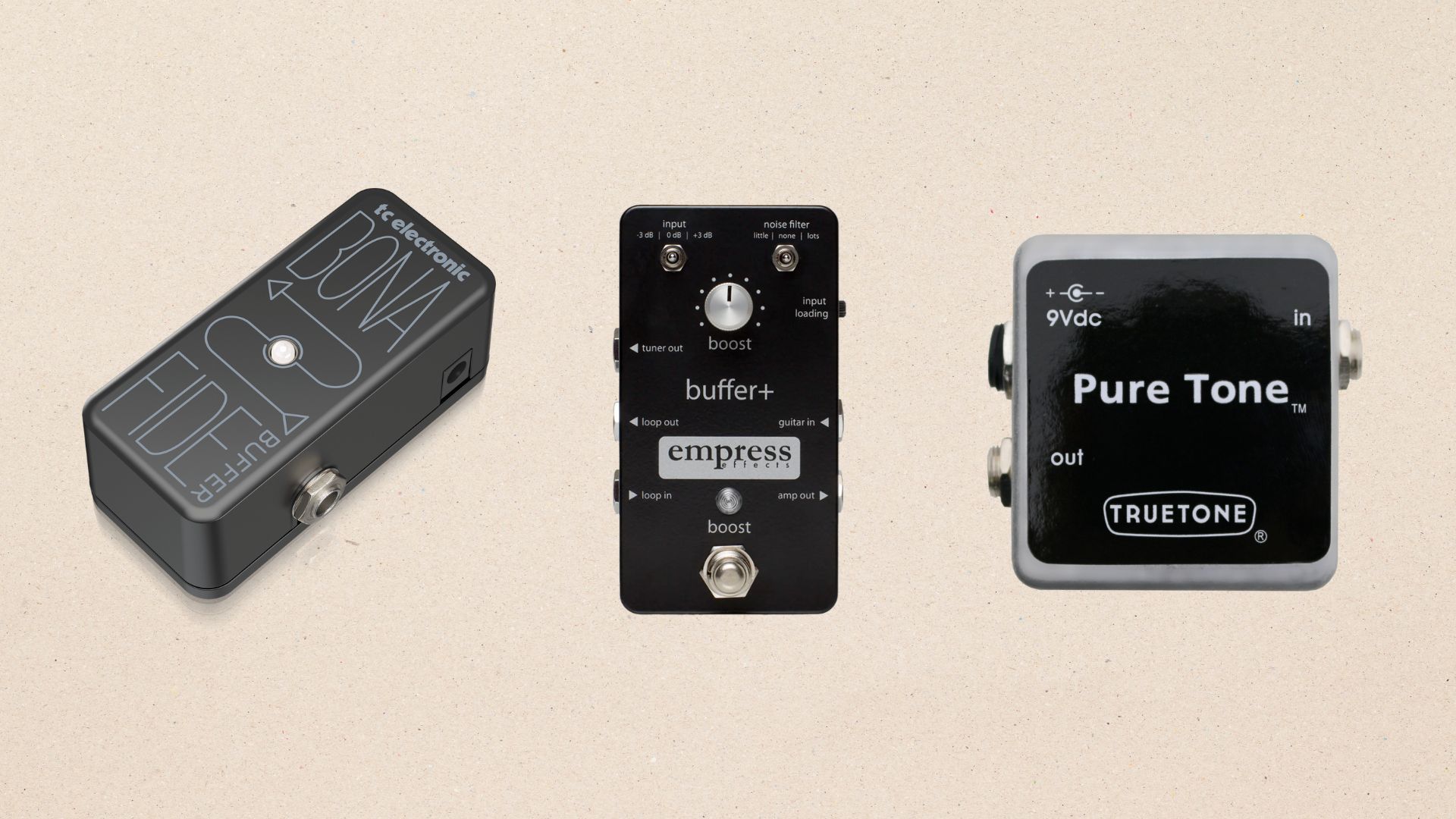
 Anthony Easton
Anthony Easton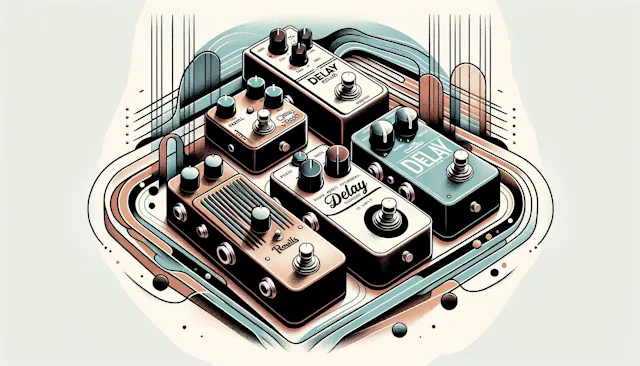
 Anthony Easton
Anthony Easton
 Anthony Easton
Anthony Easton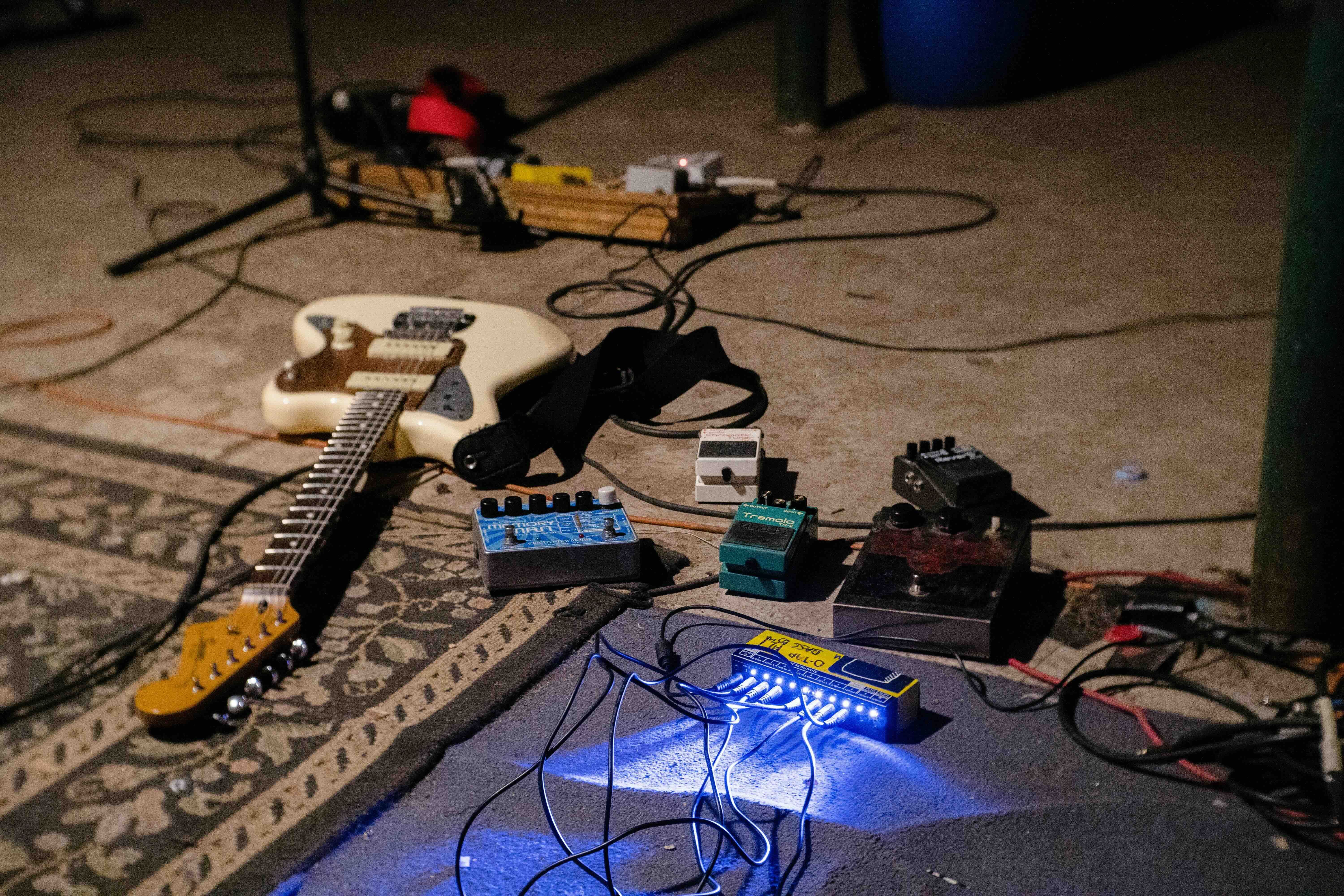
 Anthony Easton
Anthony Easton